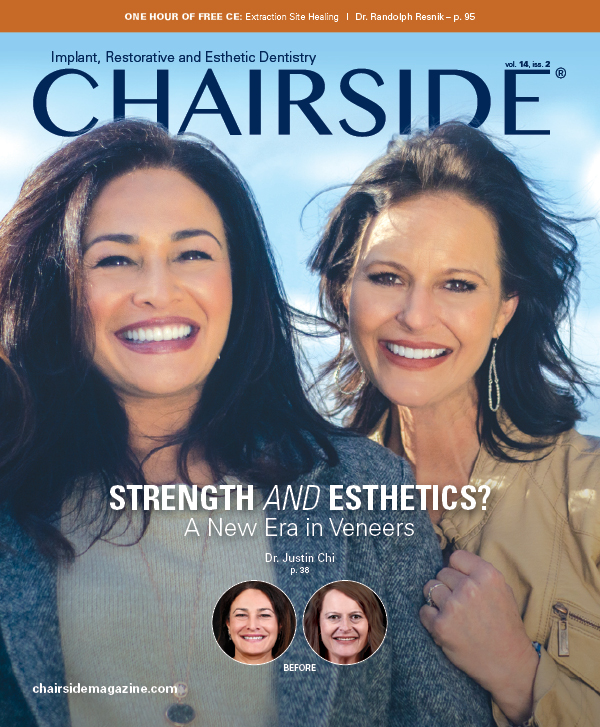Why Dentists Should TAP® Into Dental Sleep Medicine
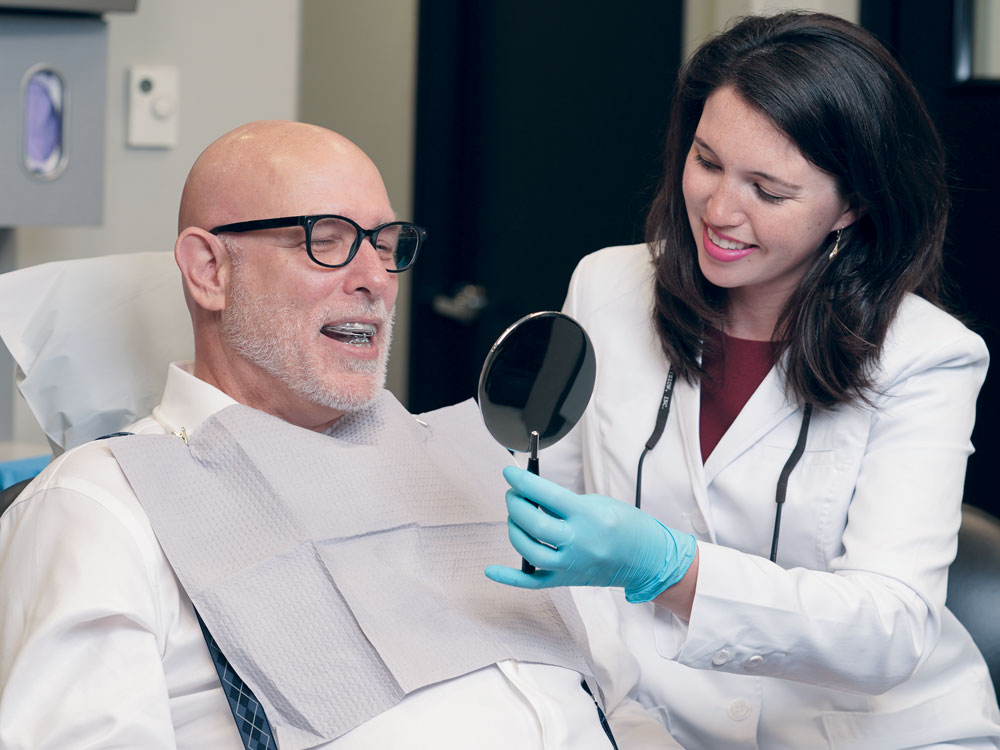
It’s been estimated that as many as 90 million people in the U.S. suffer from some form of sleep-disordered breathing (SDB), ranging from snoring to severe sleep apnea. This amounts to about half of the adult population. Fortunately, dentists are in an ideal profession to be the first line of defense in combating SDB. Treatment is often a life-changing event for patients and their families. Dental sleep medicine offers practitioners the chance to touch their patients’ lives, as well as the opportunity to grow their practice by offering screening and effective treatment via a mandibular advancement device like the dreamTAP™.
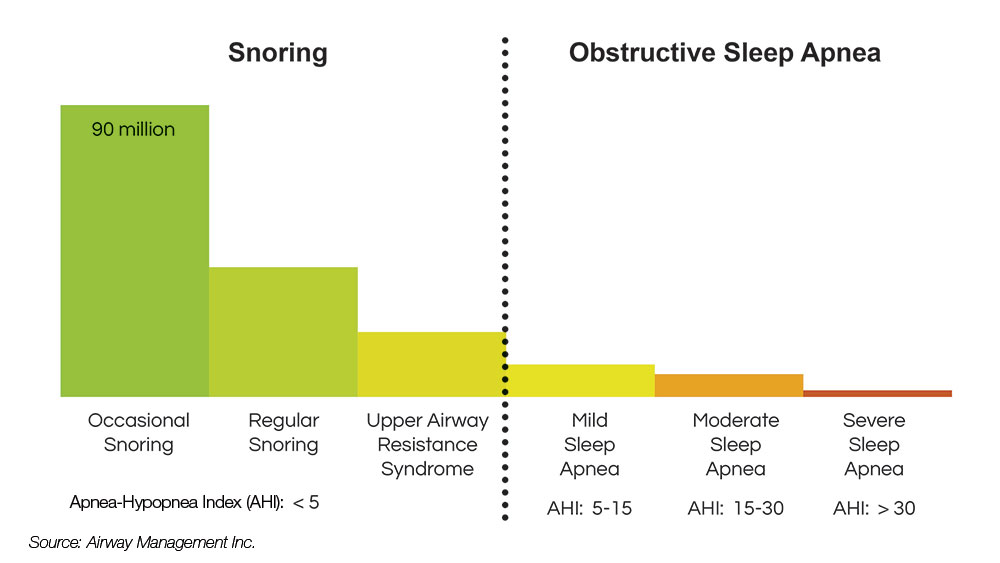
An estimated half of the U.S. adult population experiences some form of sleep-disordered breathing.
TAP® HISTORY
In 1994, Dr. Keith Thornton, a third-generation dentist and the founder of Airway Management Inc., developed one of the first adjustable mandibular advancement devices, the TAP® 1. Dr. Thornton took a simple approach to his design, based on the first step of cardiopulmonary resuscitation (CPR) — opening the airway. Every CPR class teaches the technique of opening the airway by pulling the mandible forward at the midline.
TAP appliances have become one of the most popular mandibular advancement devices, with over 500,000 delivered around the world.
For TAP appliances, Dr. Thornton’s fundamental design utilizes a single point of advancement with a mechanism at the midline. It is simple and proven to be very effective. Since the product was first released in 1996, TAP appliances have become one of the most popular mandibular advancement devices, with over 500,000 delivered around the world. In addition, a wealth of independent, peer-reviewed studies — 36 to date — have been published on TAP appliances, lending more credibility to the effectiveness of the devices. The largest was published in the Journal of Clinical Sleep Medicine and conducted by Walter Reed Army Medical Center with a cohort of over 800 patients.1 According to Patrick Tessier, director of dental business development at Airway Management, in every study, the TAP appliance was shown to be equally as successful as continuous positive airway pressure (CPAP) and better than competing devices.
In every study, the TAP appliance was shown to be equally as successful as continuous positive airway pressure (CPAP).
dreamTAP™
Among the family of popular TAP appliances is the dreamTAP, a custom-fit mandibular advancement device used to treat sleep-disordered breathing, from simple snoring to sleep apnea. It’s the fifth generation of the TAP line of devices from Dr. Thornton and produced by the skilled oral appliance team at Glidewell Laboratories.
The dreamTAP includes several unique features that are valuable to clinicians and their patients:
- The single-point, midline adjustment allows for patient involvement and avoids most TMJ problems resulting from inadvertent midline issues.
- The hardware is located outside of the tongue box area to provide ample room.
- The hardware is custom-made using Cr-Co alloy, which is nickel-free and considered to be the most biocompatible hardware available.
- The horizontal protrusion range is 15 mm — about double the protrusion of various other brands on the market.
- The device allows for 10 mm of lateral excursion in the anterior and no restrictions in the posterior; it’s been likened to dental yoga.
- The single hook prevents mouth breathing and eliminates the need for additional clasps and bands to keep the mouth closed.
- The appliance includes a free bite repositioner, the AM Aligner.
- Like all TAP appliances, it is approved for Medicare reimbursement under code E0486.
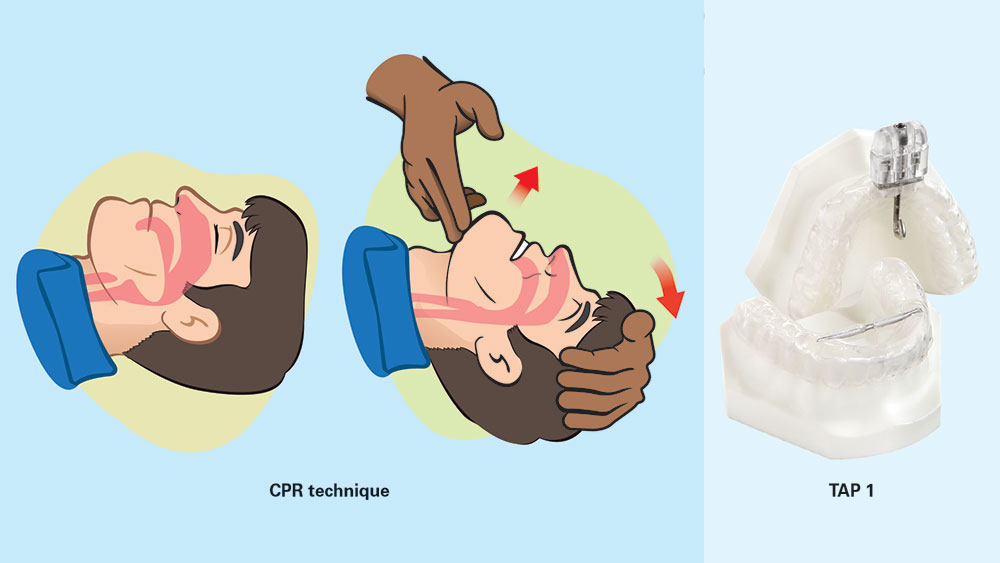
Twenty-five years ago, Dr. Keith Thornton developed one of the first adjustable oral appliance therapy devices, the TAP 1. It was based on the CPR technique, which opens the airway by advancing the mandible.
THE DENTIST'S PERSPECTIVE
To make oral appliance therapy a rewarding and inspiring part of your practice, TAP appliances offer many key features that eliminate or reduce common issues dentists might have when ordering and delivering an oral device, including the following:
- A worry-free treatment plan
TAP has a 25-year history of success, and 36 peer-reviewed studies have provided evidence of its efficacy.
- A straightforward bite protocol
The appliance can be adjusted to the ideal initial protrusion, as it provides 15 mm of range.
If the patient’s bite is a little off-center, a single-point adjustment with 10 mm of lateral excursion eliminates this issue, and the hook finds the ideal midline sliding on the engagement bar.
- Impression method options
The appliance can be fabricated from a digital or traditional impression, depending on the dentist’s preference.
- A simple seating appointment
If fit adjustments are required, dentists can achieve success with minimal effort.
- Reliable cash flow
All TAP devices are approved for Medicare reimbursement under E0486, and most private insurance follows Medicare.
Speedy in-lab turnaround time from Glidewell Laboratories affords efficient patient care.
- Profitability
Patients can self-adjust the device according to their doctor’s instructions. This saves valuable chair time and greatly improves compliance with the appliance.
A reline is possible for any new dental work.
- Staff training
Clinical education is available online at TAP.wiki to help answer common questions, such as how to change a hook, how to reline, and more.
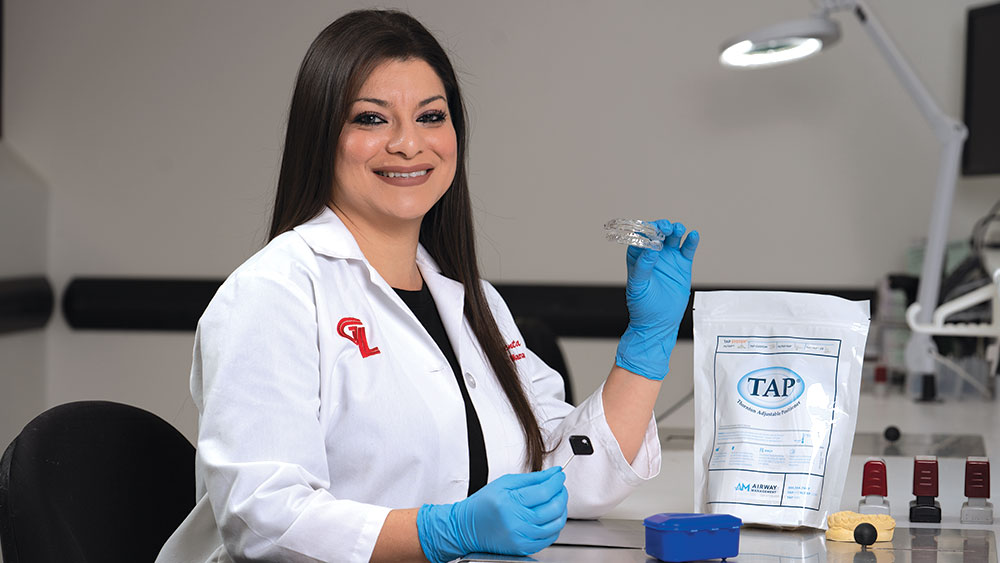
The fifth generation of the TAP line of appliances, the dreamTAP, is a custom-fit mandibular advancement device available from Glidewell Laboratories.
For nearly 25 years, dentists who treat sleep-disordered breathing have relied on TAP appliances. The latest innovation in this line of mandibular advancement devices is the dreamTAP, which continues to validate the efficacy of oral appliance therapy. Due to the simplicity and the effectiveness of treatment, dentists have many reasons to tap into the field of dental sleep medicine.
CONCLUSION
For nearly 25 years, dentists who treat sleep-disordered breathing have relied on TAP appliances. The latest innovation in this line of mandibular advancement devices is the dreamTAP, which continues to validate the efficacy of oral appliance therapy. Due to the simplicity and the effectiveness of treatment, dentists have many reasons to tap into the field of dental sleep medicine.
References
- ^Lettieri CJ, Paolino N, Eliasson AH, Shah AA, Holley AB. Comparison of adjustable and fixed oral appliances for the treatment of obstructive sleep apnea. J Clin Sleep Med. 2011 Oct 15;7(5):439-45.

